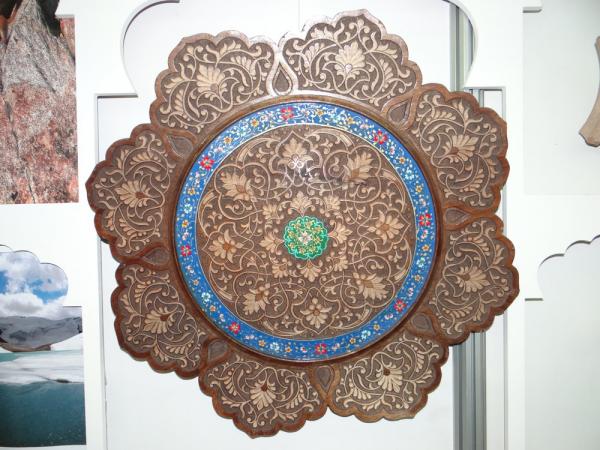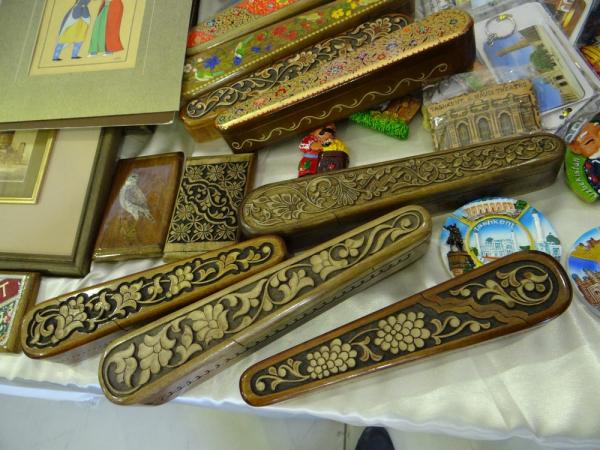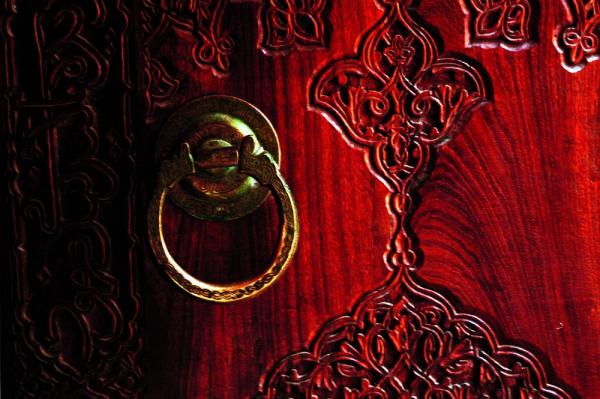|
In Uzbekistan wood carving is done on a wide range of objects: from massive beams for ceilings to tiny children's amulets. The development of this art in the past was linked up with ornamenting constructions and local architectural details, where the overlap post-and-beam system already presupposed using wooden materials on a large scale. In the traditional architecture of the XIX and XX centuries, as the originals illustrate, at times carved wood was the sole element used for decorative purposes; ornamented were: doors, shutters, gates, beams for ceilings, and pillars used in terraces -'aivan' and 'shiipan'.
A carved and painted wooden plate

| Holding a prominent place in the decor art, carved wood was also widely used in making articles of everyday practice: rests for suitcases and on which blanks are laid together, small cupboards, caskets, pencil-boxes, smart low tables - khantakhta, national musical instruments, and many-sided decorative night-tables which were in great demand among the European inhabitants of Uzbekistan in the second half of the XIX century and turn of the XX century.
For all the resplendence and variety of patterns used in ornamental plane-carving in relief, three basic groups of compositional styles can be distinguished: bagdadi, islimi and pargori. Each group is defined by ornamental motifs, composition, methods of carving and the effect of the pattern in relief, which are peculiar to them.
Carved and laquered pencil boxes

| The bagdadi style of carving is known for its comparatively simple geometrical con-figuration. Formally varieties of bagdadi style were widely used in decorating objects of everyday practice and adornments. Shown here are typical specimens of doors decorated in the bagdadi style by Samarkand and Bukhara masters.
A part of wooden door with carved ornaments

| Countless, and sometimes very complex, vegetal and vegetal-geometrical variations of subjects, which are widely applied in islimi-style classical ornamentation, known almost throughout the Middle and Near East since olden times - form the basis of islimi-style carving. This ornamentation has strict principles of decorative forms and compositions. It is made up of stalks rhythmically climbing up, strewn with buds, leaves and flowers, interlaced in fantastic medallions. The islimi-style ornaments is done in the method of plane-carving in relief with a chosen setting, and often with a richly-decorated relief and background. Pargori-style carving, which is based on a geometrical net made up of circles, squares and triangles, is a particular variety of fine carving against a setting.
|